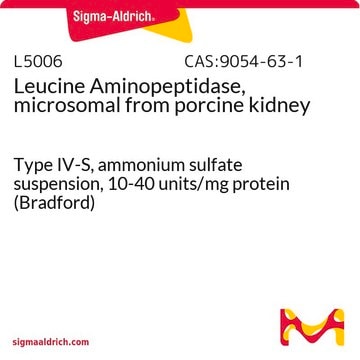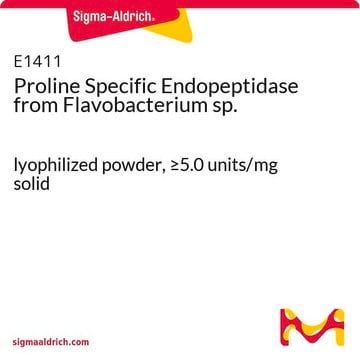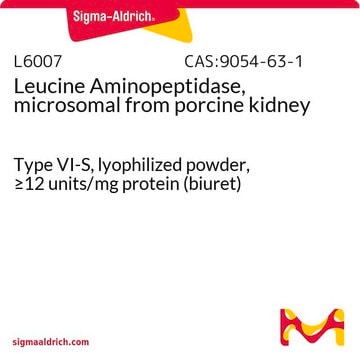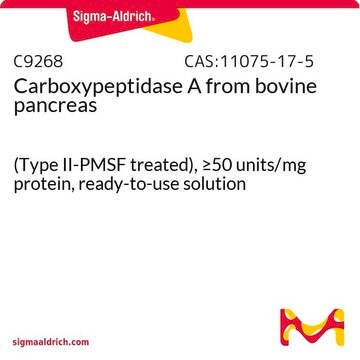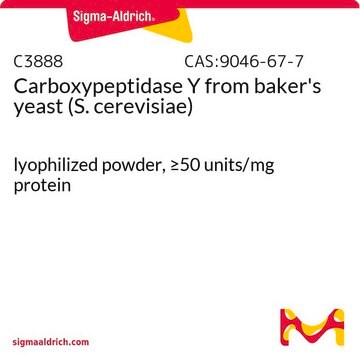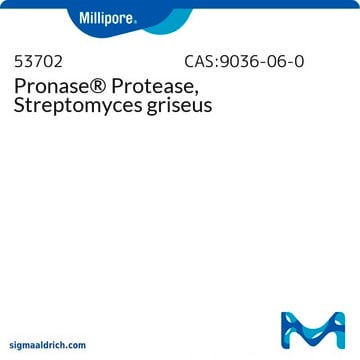P6675
Prolidase from porcine kidney
lyophilized powder, ≥100 units/mg protein
Synonym(s):
Aminoacyl-L-proline hydrolase, Imido Dipeptidase, Prolidase, Proline dipeptidase
About This Item
Recommended Products
form
lyophilized powder
specific activity
≥100 units/mg protein
composition
Protein, 20-74% Lowry
storage temp.
−20°C
Looking for similar products? Visit Product Comparison Guide
Related Categories
General description
Application
- in the enzymatic hydrolysis of porcine milk for the recovery of L-glutamine from proteins and peptides
- in the proteolysis of skim milk for the determination of ε-(γ-glutamyl)lysine and free aminoacids
- to determine its effect on the activity of enterococcin A 2000
Biochem/physiol Actions
Unit Definition
Physical form
signalword
Danger
hcodes
Hazard Classifications
Eye Irrit. 2 - Resp. Sens. 1 - Skin Irrit. 2 - STOT SE 3
target_organs
Respiratory system
Storage Class
11 - Combustible Solids
wgk_germany
WGK 1
Certificates of Analysis (COA)
Search for Certificates of Analysis (COA) by entering the products Lot/Batch Number. Lot and Batch Numbers can be found on a product’s label following the words ‘Lot’ or ‘Batch’.
Already Own This Product?
Find documentation for the products that you have recently purchased in the Document Library.
Customers Also Viewed
Our team of scientists has experience in all areas of research including Life Science, Material Science, Chemical Synthesis, Chromatography, Analytical and many others.
Contact Technical Service